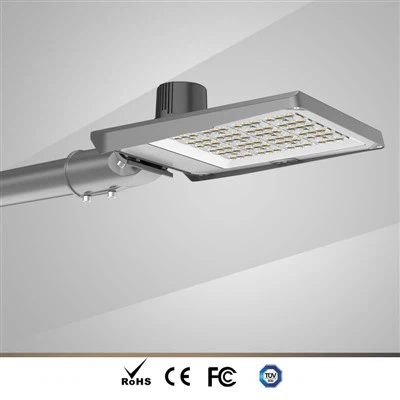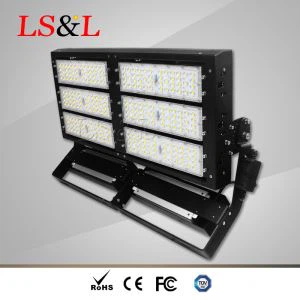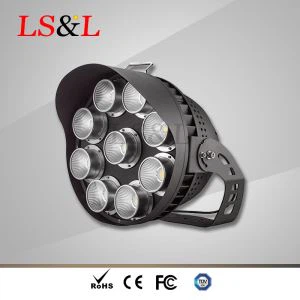1, Brightness and luminous flux
Brightness is an important indicator for measuring the brightness of a lighting fixture, usually measured in lumens (Lm). In industrial lighting, reasonable brightness not only ensures clear visibility of the work surface, but also reduces visual fatigue and improves work efficiency. Luminous flux is the total amount of light emitted by a luminous body per second, also expressed in lumens (Lm). When selecting, users should choose LED linear lights with appropriate luminous flux according to the specific illumination requirements of the work area. Generally speaking, higher luminous flux means brighter lighting effects, but excessively high luminous flux may also cause glare and affect visual comfort. Therefore, when making a choice, it is necessary to balance the relationship between brightness and comfort based on actual needs.
2, Color temperature and color rendering
Color temperature is a unit of measurement that identifies the color of a light, expressed in K values. Different color temperatures can create different atmospheres, such as yellow light (below 3300K) giving a warm feeling, while white light (above 5300K) appears bright and clear. In industrial lighting, it is usually recommended to choose lamps with a color temperature between 3000K and 4000K, which can provide soft light while maintaining a good working field of view.
Color rendering refers to the ability of a light source to reproduce the color of an object, measured by the Color Rendering Index (CRI). A high color rendering index means that the color of an object can be presented more accurately, which is particularly important for industrial environments that require fine manipulation. When making a purchase, it is recommended to choose LED linear lights with a color rendering index of 90 or above to ensure the true reproduction of colors and reduce visual errors.
3, Anti static ability and lifespan
The anti-static ability of LED lamps is an important manifestation of their stability. LED lamps with strong anti-static ability are less susceptible to static interference during use, thereby extending their service life. In addition, the lifespan of LED lighting fixtures is also a key factor to consider when choosing. Generally speaking, the lifespan of LED lighting fixtures can reach tens of thousands of hours or more, but the specific lifespan depends on the light attenuation situation. When choosing, attention should be paid to the product's light decay curve, and LED linear lights with low light decay and long lifespan should be selected.
4, Protection level and safety
In industrial environments, LED linear lights need to have a certain level of protection to cope with harsh conditions such as dust and moisture. The protection level is usually represented by IP code, such as IP65 indicating that the lamp has the ability to prevent dust and water spray. When choosing, LED linear lights with appropriate protection levels should be selected according to the needs of the actual working environment. In addition, attention should be paid to the safety of the product, such as whether it has overload protection, short circuit protection and other functions, to ensure safety during use.
5, Energy Efficiency and Environmental Protection
With the energy crisis and increasing environmental awareness, energy efficiency and environmental protection have become indispensable factors when choosing LED linear lamps. Energy efficient LED lighting fixtures can provide the same lighting effect while consuming less electricity, thereby reducing operating costs. When making a purchase, you can pay attention to the energy efficiency label of the product and choose products with high energy efficiency levels. In addition, the environmental friendliness of LED lighting fixtures is also worth paying attention to, such as whether environmentally friendly materials are used and whether they can be recycled.
6, Beam angle and installation method
Beam angle refers to the angle at which the light emitted by a lamp spreads in a horizontal plane. Different beam angles can affect lighting effects and spatial perception. When making a purchase, the appropriate beam angle should be chosen according to the lighting requirements. For example, for areas that require uniform illumination, lighting fixtures with larger beam angles can be selected; For areas that require emphasis on specific objects, lighting fixtures with smaller beam angles can be chosen.
The installation method is also a factor to consider when choosing. There are various installation methods for LED linear lights, such as lifting, embedded, wall mounted, etc. When selecting, the appropriate installation method should be chosen based on the actual installation environment and requirements.
7, Brand and after-sales service
When choosing industrial LED linear lights, brand and after-sales service are equally important. Famous brands usually have stronger research and development capabilities and higher product quality assurance, which can provide more reliable products. Meanwhile, high-quality after-sales service can provide users with more convenient installation, maintenance, and repair services, reducing usage costs. Therefore, when making a purchase, it is recommended to prioritize well-known brands and pay attention to their after-sales service system.
8, Actual testing and experience
If conditions permit, it is recommended to conduct actual testing and experience during the purchasing process. Through actual testing, one can intuitively understand the performance parameters of LED linear lights such as brightness, color temperature, and color rendering, as well as their lighting effects in different environments. At the same time, users can also learn about the convenience of product installation and operation through experience.
https://www.luxsky-light.com/led-linear-light/led-tri-proof-linear-lights/led-tri-proof-plant-growing-linear-lights.html






